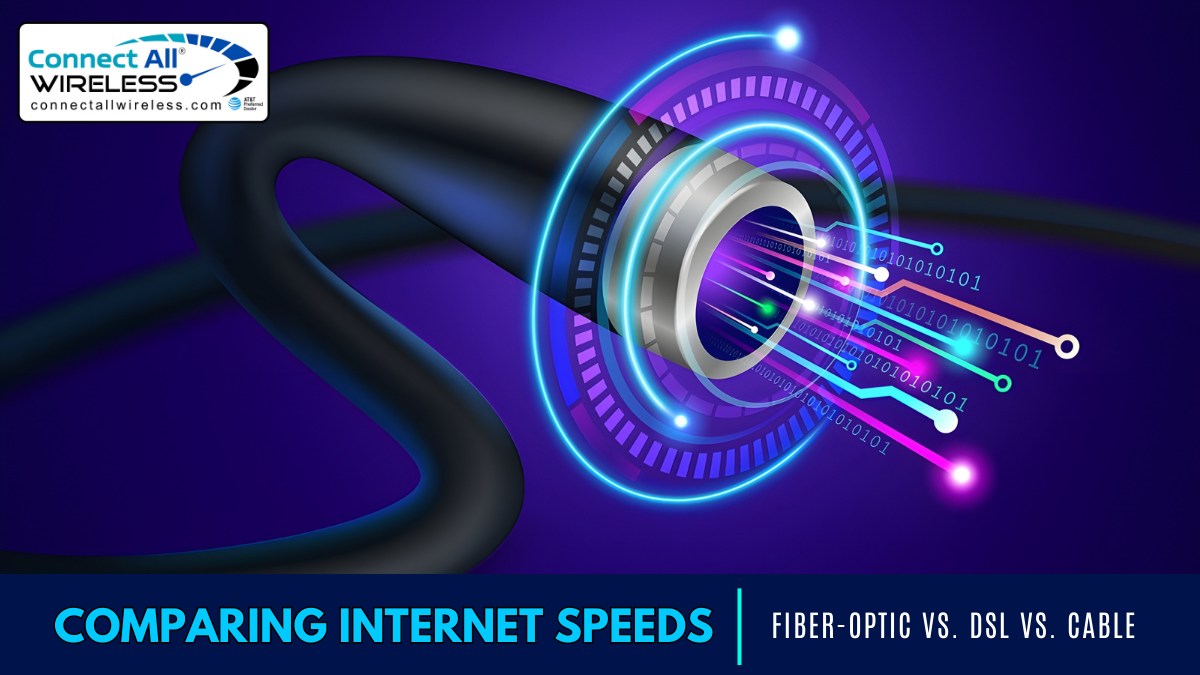In the ever-evolving landscape of internet connectivity, the options for accessing the web have expanded significantly. Among the myriad choices available, three primary types of connections stand out: Fiber-optic, DSL (Digital Subscriber Line), and Cable. Understanding the differences in their speeds, reliability, and performance is crucial when selecting the best option for your needs.
Fiber-Optic Internet
Fiber-optic internet utilizes thin, flexible glass or plastic fibers to transmit data through light signals. Renowned for its incredible speed and reliability, fiber-optic internet has gained popularity for both residential and commercial use. Its key advantages lie in its exceptional bandwidth and low latency.
Speed: Fiber-optic internet provides unparalleled speeds, often reaching up to 1 Gbps (Gigabit per second) and beyond. This rapid transmission enables seamless streaming, gaming, and file downloads without compromising quality or speed.
Reliability: Compared to DSL and cable, fiber-optic internet boasts higher reliability due to its immunity to electromagnetic interference and weather conditions that might affect other types of connections.
Performance: The low latency of fiber-optic connections ensures minimal delays, ideal for real-time applications like online gaming or video conferencing.
DSL (Digital Subscriber Line) Internet
DSL internet operates through existing telephone lines but utilizes a different frequency range, allowing for simultaneous internet and phone use. It's one of the earliest forms of high-speed internet and has undergone several advancements over the years.
Speed: DSL speeds typically range from 1-100 Mbps, though the actual speed depends on the distance from the provider's central hub. The farther the location from the hub, the slower the connection.
Reliability: DSL reliability diminishes with distance from the provider's hub, as signal degradation occurs over long distances.
Performance: While DSL provides decent speeds for regular browsing and streaming, its latency might be higher compared to fiber-optic internet, impacting real-time applications.
Cable Internet
Cable internet utilizes the same coaxial cables that deliver cable television to transmit internet data. It's widely available and remains a popular choice for many households.
Speed: Cable internet speeds range from 20 Mbps to 1 Gbps, with variations based on the number of users sharing the bandwidth in a given area. During peak usage times, speeds might decrease due to network congestion.
Reliability: Cable internet can experience slowdowns during high-traffic periods, affecting the consistency of the connection, especially in densely populated areas.
Performance: Cable internet generally offers faster speeds than DSL but might have slightly higher latency, impacting real-time applications marginally.
Comparative Analysis
When comparing these three types of internet connections, several factors should be considered:
-
Speed: Fiber-optic internet typically offers the fastest speeds, followed by cable, while DSL tends to lag behind in terms of maximum achievable speeds.
-
Reliability: Fiber-optic internet stands out for its reliability due to its immunity to external interferences, while both DSL and cable might suffer from occasional disruptions.
-
Availability: Cable and DSL are more widely available compared to fiber-optic internet, which might still be limited in certain regions.
-
Price: DSL is often the most affordable option, with cable falling in the mid-range and fiber-optic generally being the most expensive due to its superior speed and reliability.

